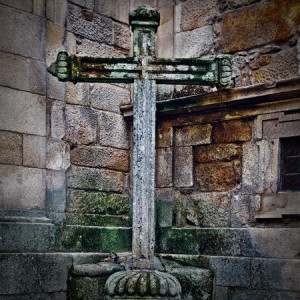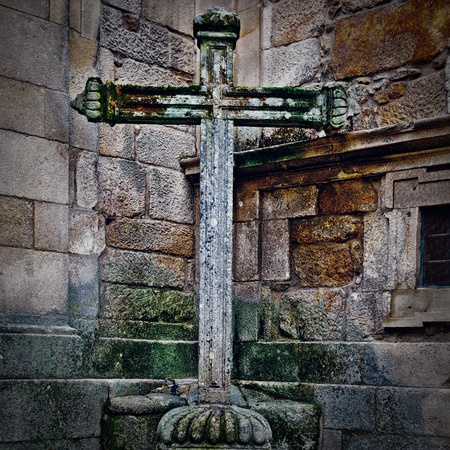
One way or another, the Apostles’ Creed has been part of my worship life since I was a child. Growing up in a liturgical church, we recited it every Sunday. I made a commitment to Christ in another liturgically-minded denomination in my twenties and continued reciting it weekly. For a number of years, I recited it as part of my daily prayer time. The current church I am a member of recites it monthly on our communion Sunday. Parallel to my personal experience, the Apostles’ Creed has been part of the worship life of the church since it was young.
The Apostles’ Creed was used in church history much as the Roman Creed was in the time of the early church: as a baptismal confession; as an outline for teaching; as a summary of faith and belief; as an affirmation in worship; and as a guard against heresy. Ambrose and Augustine suggested the repetition of the Apostles’ Creed in daily devotions. Augustine said in his work, The Enchiridion:
For you have the Creed and the Lord’s Prayer. What can be briefer to hear or to read? What easier to commit to memory? When, as the result of sin, the human race was groaning under a heavy load of misery, and was in urgent need of the divine compassion, one of the prophets, anticipating the time of God’s grace, declared: “And it shall come to pass, that whosoever shall call on the name of the Lord shall be delivered.” Hence the Lord’s Prayer. But the apostle, when, for the purpose of commending this very grace, he had quoted this prophetic testimony, immediately added: “How then shall they call on Him in whom they have not believed?” Hence the Creed.
Martin Luther identified it as one of three binding summaries of belief. John Calvin divided his Institutes into four parts, corresponding to the Apostles’ Creed, which all Christians were familiar with.
For as the Creed consists of four parts, the first relating to God the Father, the second to the Son, the third to the Holy Spirit, and the fourth to the Church, so the author, in fulfillment of his task, divides his Institutes into four parts, corresponding to those of the Creed.
While each of the above noted uses can be identified at various points in church history, it seems to have been its growing use within the devotional and liturgical life of believers that eventually solidified its position as “the mature flower” of Western creedal development. The local variants of the older Roman Creed were increasingly laid aside in the worship and practice of local churches and replaced by the Apostles’ Creed. Thus the journey from the Roman Creed to the Apostles’ Creed is complex, woven together that of the historical documents and additional creeds of the first few centuries of the church.
The earliest evidence for the received text for the Apostles’ Creed or “T” is within the text of a Benedictine missionary manual written sometime between 710 and 724 AD. A comparison of the Roman Creed to the Apostles’ Creed calls for speculation that the additions were largely to address theological problems as the church confronted a series of heresies between the mid–second century and early eighth centuries. Such an understanding of its journey would draw upon the differences in a manner something like the following.
| Roman Creed | Apostles’ Creed |
| 1. I believe in God the Father Almighty | 1. I believe in God the Father Almighty [creator of Heaven and Earth] |
| 2. And in Christ Jesus, his only Son, our Lord; | 2. And in Jesus Christ, his only Son, our Lord; |
| 3. Who was born by the Holy Ghost of the Virgin Mary; | 3. Who was [conceived] by the Holy Spirit, born of the Virgin Mary; |
| 4. Was crucified under Pontius Pilate and was buried; | 4. [Suffered] under Pontius Pilate, was crucified [dead] and buried [ He descended to Hell (Hades)]; |
| 5. The third day he rose from the dead; | 5. on the third day rose again from the dead; |
| 6. He ascended into heaven; and sitteth on the right hand of the Father; | 6. He ascended into heaven; and sits at the right hand of [God] the Father [Almighty]; |
| 7. From thence he shall come to judge the quick and the dead. | 7. From thence he will come to judge the living and the dead. |
| 8. And the Holy Ghost; | 8. [I believe] in the Holy Spirit; |
| 9. The Holy Church; | 9. The Holy [Catholic] Church [The communion of saints]; |
| 10. The forgiveness of sins; | 10. The forgiveness of sins; |
| 11. The resurrection of the body (flesh). | 11. The resurrection of the body (flesh); |
| 12. [And eternal life] Amen. |
Beginning with the Roman Creed, we see that it contains the Trinitarian formula of Father, Son, and Holy Spirit; and confesses belief in the life, death, and resurrection of Jesus Christ.
The addition of the phrase “Creator of Heaven and Earth” in the Apostles’ Creed to the first article of the Roman Creed rejects the Gnostic belief that creation was the act of a demiurge Christ; and the Manichean dogma that all matter was intrinsically evil. The addition to article 3 that Jesus Christ was: “[conceived] by the Holy Ghost, born of the Virgin Mary” explicitly excluded the Ebionite denial in the virgin birth of Christ and the Monarchian denial that Jesus was conceived by the Holy Ghost.
The addition of “I believe” to article 8 adds clarity to the confession of believing in “Father, Son, and Holy Spirit” as God, countering the Modalistic or Monarchian conception of God. It seems the attempt to counter Modalism is within the specification in article 6 that the Father is “God Almighty.” The resurrection of the body in article 11 and the addition of article 12 countered Greek and Gnostic prejudice against the corporal body and specified an existence consistent with the “resurrection life” promised by Christ and distinctly different than the “eternal life” of the mystery cults. Confessing the real birth, suffering, death (by crucifixion), and burial of Christ in articles 3 through 5 countered the Marcion and Docetic belief that such things were unworthy of the true Christ.
The additions of “Catholic” (meaning universal) and “the communion of saints” in article 9 may suggest an attempt to cope with the problem of unity in diversity within the early church. As distinct subcultures of theology and worship developed within the “catholic” church, there was a desire to acknowledge their legitimacy while attempting to exclude heresies, which also sought acceptance. As the body of Christ grew and diversified, the ears were denying they were a part of the body; the body was questioning the continuing function of the stomach. Despite the diversity within the church, if the “Head” of the creed in articles 1 through 8 was believed and confessed, there was a communion of saints within a universal church that existed beyond physical walls, geographic boundaries, theological particulars, and ultimately time itself. This acknowledgement of unity within diversity became an element of the rule of faith itself.
Unquestionably the Apostle’s Creed is a more detailed and theologically mature creedal statement of belief than the Roman Creed. However, it did not develop solely as a response to the various dogmatic concerns as noted above. There is also strong suggestive evidence that The Apostles’ Creed originated outside of Rome and was eventually accepted as the baptismal rite within the Roman church by the ninth century. Presuming the probability of this line of development, the church beyond the local reach of Rome was merely returning to her an enriched, improved statement of the same rule of faith, which she herself had compiled in the second century.
The Apostles’ Creed continues in modern times as the most widely accepted and used creed among Christians. All the individual articles noted above within it originated before the Nicene Creed was formulated—regardless of whether the final revision appeared as late as the early eighth century. And all the articles are in agreement with the New Testament and the teaching of the apostles. Phillip Schaff observed in his day that an attack on the Apostles’ Creed was also an indirect attack upon the New Testament. But he predicted that the Creed would outlive these assaults and continue in the life of the church, sharing in the victory of the Scriptures over all forms of unbelief.
This description of the Apostles’ Creed (and a previous one on the Roman Creed) was compiled from the New Dictionary of Theology (179-181), by Sinclair Ferguson and J. I. Packer; the Evangelical Dictionary of Theology (72–73), Walter A. Elwell, editor; The Emergence of the Catholic Tradition (117), by Jaroslav Pelikan; Early Christian Creeds, by J. N. D. Kelly; and The Creeds of Christendom, Volume 1, The History of the Creeds, by Phillip Schaff. For more on the early creeds and heresies of the Christian church, see the link: “Early Creeds.”





